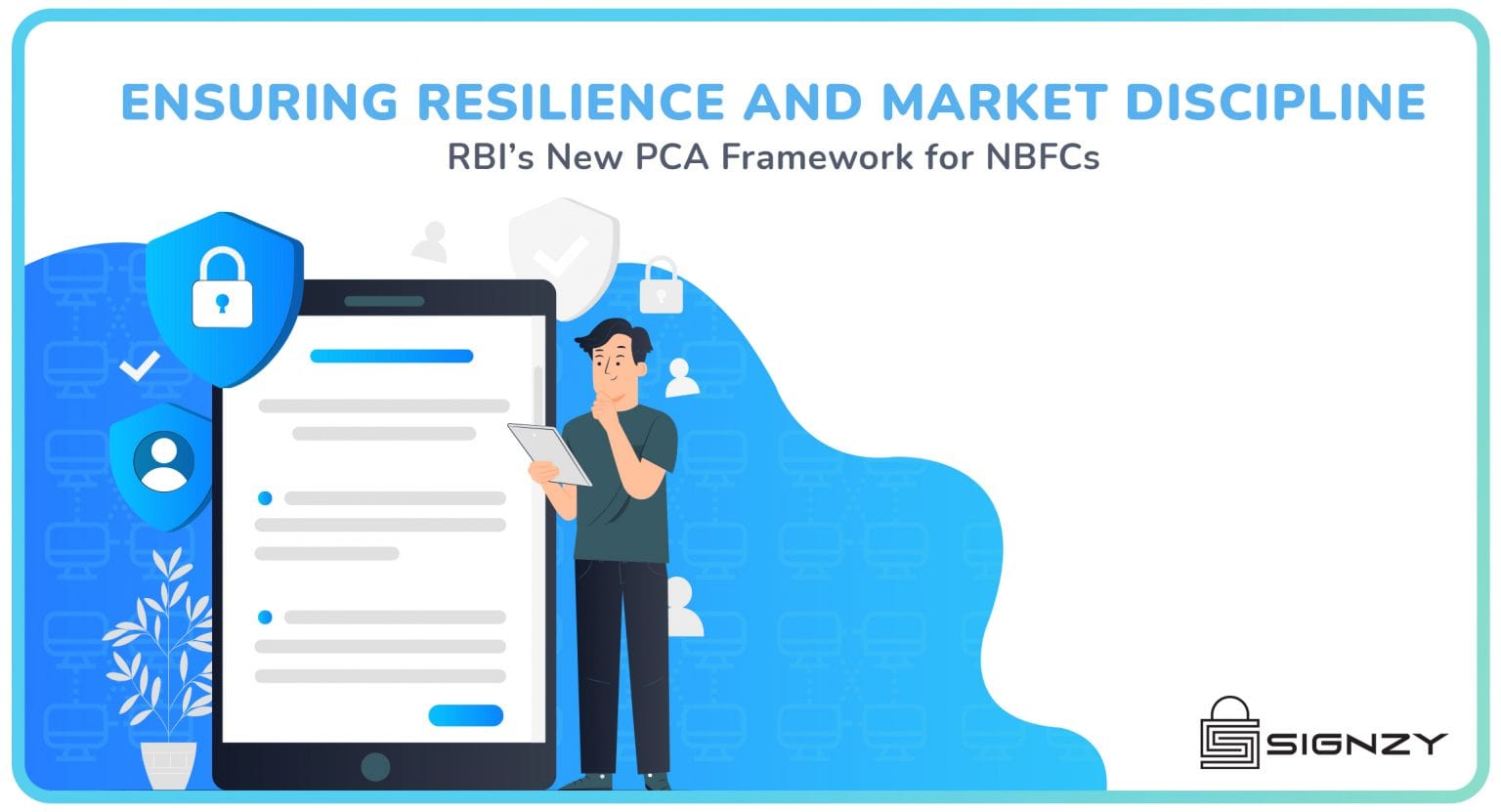RBI’s New PCA Framework for NBFCs
The new Prompt Corrective Action(PCA) framework set forth by RBI for troubled NBFCs ensures market discipline and resilience of their financial health. In the past, PCAs were exclusive to banks. But, because many major NBFCs like SREI Group, IL&FS, DHFL, and Reliance Capital have run into financial crises over the past couple of years, this move comes at an apt time. The PCA framework targets to strengthen the supervisory tools from October 1, 2022. This will be based on the NBFCs’ financial position after March 31, 2022.
The primary objective of the PCA or Prompt Corrective Action framework is oriented and much mandated. It enables supervisory intervention at the precise and appropriate time, mandating the supervised entity to properly initiate and implement remedial measures. This is done to restore the supervised entity’s financial health in case of considerable deterioration. The PCA framework also acts as a tool for effective and strict market discipline maintenance.
Which are the entities included?
Previously, The PCA Framework applied to all banks operating in India. This includes foreign banks operating through subsidiaries or branches based on breach of risk thresholds of identified indicators. Now, via the RBI Notification dated December 14, 2021, It will also be applicable for all deposit-taking NBFCs, and other large NBFCs that position on the middle, upper, and top-most levels of the scale-based regulation for NBFCs of the RBI.
This includes Investment and Credit Companies, Core Investment Companies (CICs), Infrastructure Debt Funds, Infrastructure Finance Companies, Microfinance Institutions, and Factors. But it excludes NBFCs not accepting Public money, Government companies, and Housing Finance companies. This would, therefore, apply to a smaller percentage of 10,000 NBFCs, most of which would be excluded from such tight regulatory purview as of now, till they grow up in size
What Is The PCA Framework
An NBFC will be placed under the PCA framework based on the Supervisory Assessment made by the RBI and/or the audited Annual Financial Results. However, the RBI can impose PCA on any NBFC(if they deem it fit) during a year.
For NBFCs-D and NBFCs-ND, indicators to be tracked would be Capital to Risk-Weighted Assets Ratio (CRAR), Tier I Capital Ratio (*refer to footnotes for definitions), and Net NPA Ratio (NNPA). For CICs, indicators that need to be tracked would be ANW/ARW(Adjusted Net Worth/Aggregate Risk-Weighted Assets), NNPA, and Leverage Ratio. The framework defines 3 risk levels with varying seriousness, criteria to enter either of these risk thresholds and RBI mandated controls (a summary of these is explained in the below table)
For further understanding, Capital Adequacy Ratio (or CRAR) is the ratio of the total capital(tier 1 and tier 2) and risk-weighted assets. For example, a house loan with strong collateral is inherently less risky than a loan given on a letter of credit and hence might need a higher capital cover in case it goes bad. This ratio is used to protect depositors. It also improves the efficiency and stability of financial systems around the world. Tier 1 capital is core capital. It consists of equity capital, intangible asset, ordinary share capital, and audited revenue reserves. Tier-1 capital absorbs losses and doesn’t require a bank to stop operations. Tier 2 capital is made of unaudited retained earnings, unaudited reserves, and general loss reserves. This capital absorbs losses in the event of any company entirely winding up or liquidating.
What is the PCA framework’s impact?
These tight regulations would force the NBFCs to act in the best interest of public investors and make them better handle their financial books and asset quality. This, in turn, will make a provision of timely intervention to avoid a total wind-up and loss of money for equity holders and depositors. These steps are excellent for the current financial ecosystem as they provide a check on any company faltering in its functions. Prima facie, this might seem a bit too stringent, but in the long run, this will ensure better safety of both the customers as well as the companies.
About Signzy
Signzy is a market-leading platform that is redefining the speed, accuracy, and experience of how financial institutions are onboarding customers and businesses – using the digital medium. The company’s award-winning no-code GO platform delivers seamless, end-to-end, and multi-channel onboarding journeys while offering totally customizable workflows. It gives these players access to an aggregated marketplace of 240+ bespoke APIs that can be easily added to any workflow with simple widgets.
Signzy is enabling 10 million+ end customer and business onboarding every month at a success rate of 99% while reducing the speed to market from 6 months to 3-4 weeks. It works with over 240+ FIs globally including the 4 largest banks in India, a Top 3 acquiring Bank in the US, and has a strong global partnership with Mastercard and Microsoft. The company’s product team is based out of Bengaluru and it has a strong presence in Mumbai, New York, and Dubai.
Visit www.signzy.com for more information about us.
You can reach out to our team at reachout@signzy.com
Written By:

Signzy
Written by an insightful Signzian intent on learning and sharing knowledge.



